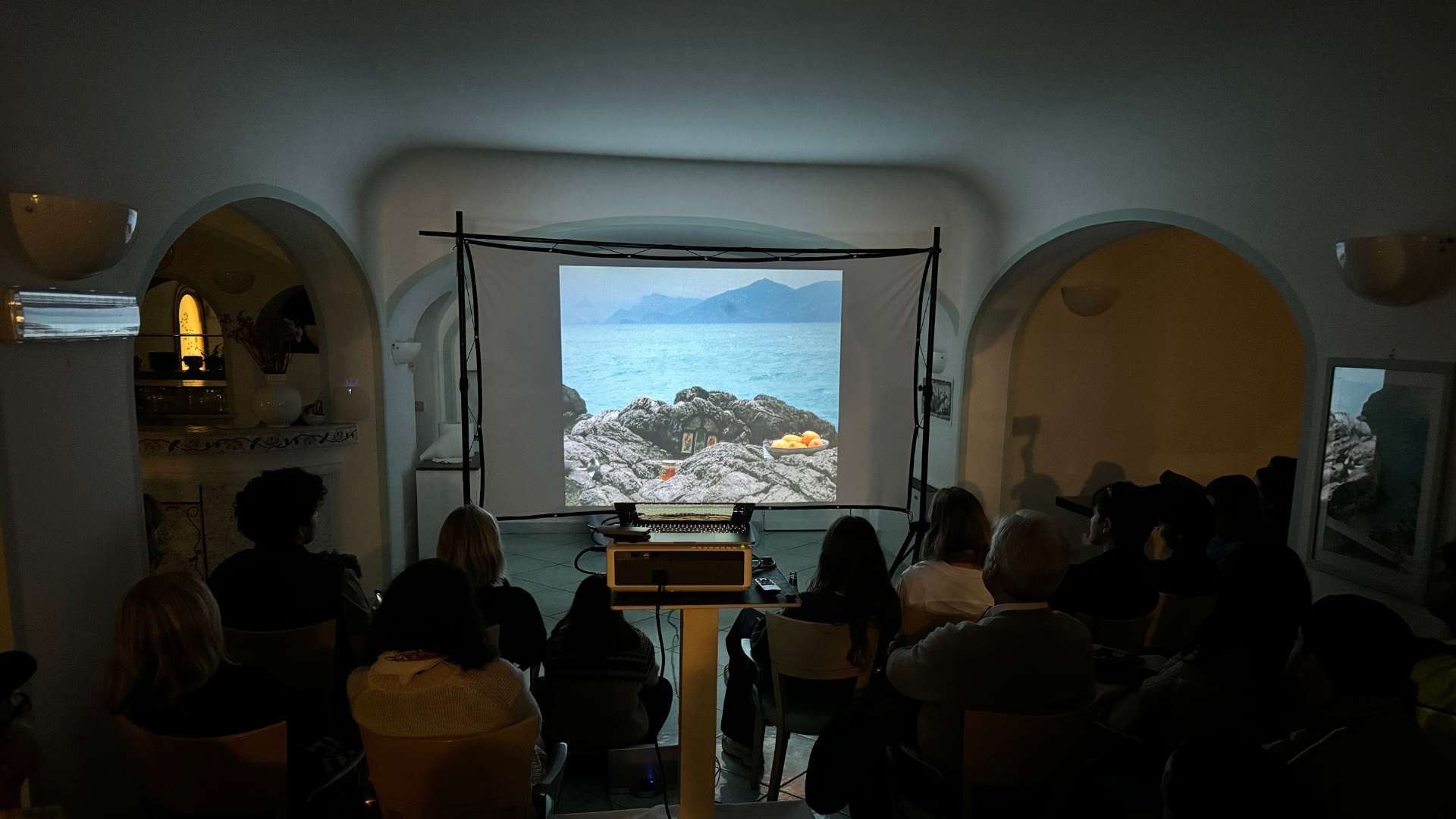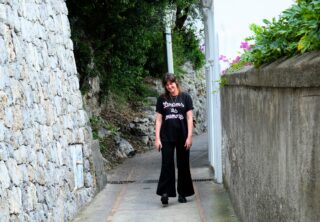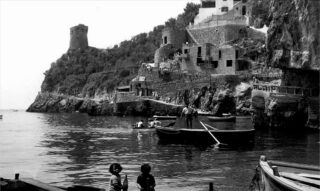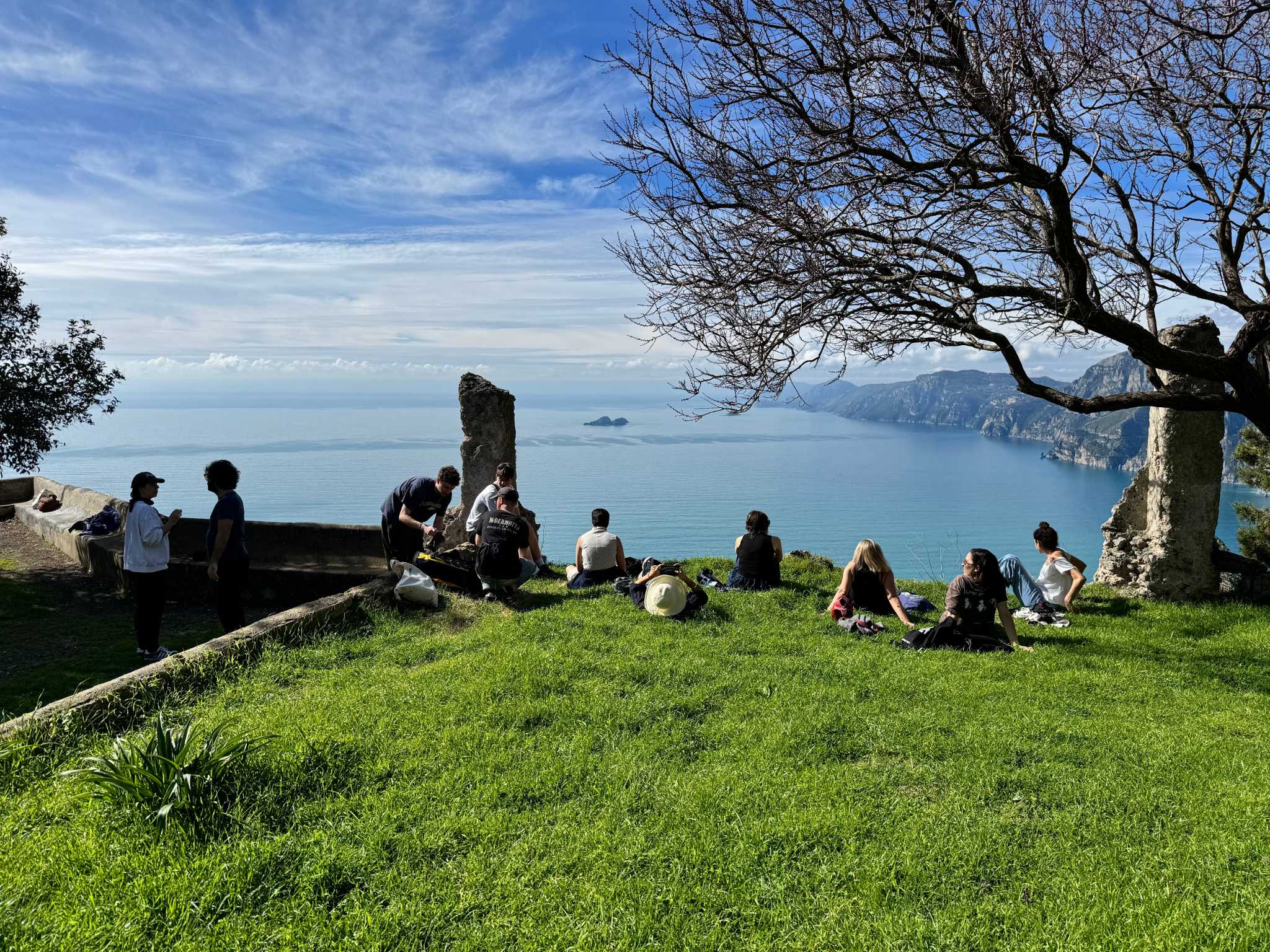
From 24 February to 2 March 2024, the tide brought the Architectural Design Studio 7 (ADS7) students of the Royal College of Art in London to the Amalfi Coast to work together on the project Being with-in: The Live Project in Praiano.
We explored the territory of Praiano through walking and observing, which is understood as a synthetic form of active art, a primordial tool for knowledge, understanding, and transformation of the territory.
The ADS7 collected films and recorded sounds, architecture, and landscape pieces, weaving moments of convivial exchange with the inhabitants of Praiano. It demonstrated how places that risk being lost, suspended between the contradictions of the winter and summer seasons, must instead be valued as resourcescapes — rich in authentic materials, relationships, and stimuli.
The residence on the Amalfi Coast was precious because, starting from the action of walking as an aesthetic practice, it allowed us to rediscover the rhythm of these places and respect their ancient temporality. At the same time, it has made it possible to celebrate listening as a form of resistance to the loss of identity and collective memory to which places such as the coast are destined, crushed by seasonal and mass tourism.
The research Being with-in: The Live Project in Praiano
Being with-in: The Live Project in Praiano is the title of the collective work that the ADS7 of the Royal College of Art in London has developed on the Amalfi Coast under the direction of Sabrina Morreale and Lorenzo Perri, architects, teachers, and founders of Lemonot, among the nine architecture firms selected for the Italian Pavilion of the 18th International Architecture Exhibition - La Biennale di Venezia 2023.
The research project crossed paths with people who represent the historical memory and the contemporaneity of these places. The students immersed themselves in the territory, putting its needs and desires at the center, as well as the conflicts of those who live there.
«As architects, we are interested in learning from places that change, regenerating themselves, re-establishing genuine contact between behaviors, rituals, and local resources. Praiano - like the entire Amalfi Coast - during the winter, when commercial activities and tourist facilities are closed, suddenly seems isolated. But the temporary detachment frees the territory of all its superstructures, helping these places to rediscover their identity, rebuilding new community dimensions" - report Sabrina and Lorenzo.
The ADS7 search started from the three walkscapes that lead to Cala La Gavitella, Marina La Praia, and the Convent of San Domenico, and from the many actors they encountered.
From their residence on the Amalfi coast, three short films were born: "Flesh on the rocks", "I'm at Praia, the weather is not good", "Marmalade".
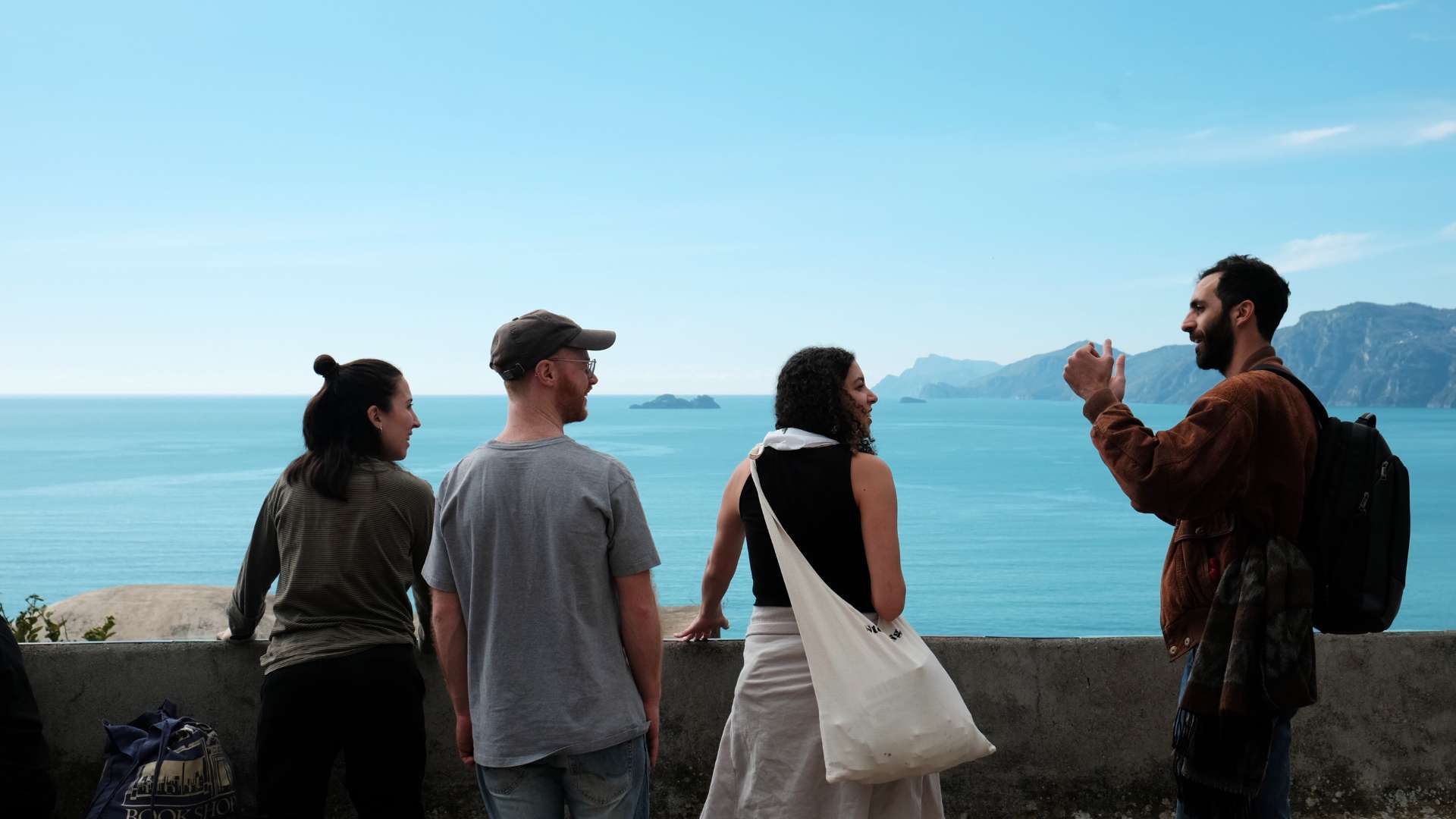
Praiano and the f irst walkscape towards Cala La Gavitella with Baldassarre and Francesca
On the first day we explored Praiano, highlighting how in winter the town and, at the same time, the entire Amalfi Coast becomes «an island, more than an island (proper). In the apparent silence of the winter season, the territory gets rid of all its superstructures and is emptied, both of tourists and of the urban scaffolding, designed to be used only for a few months of the year".».
Along this route we met Baldassarre and Francesca, who welcomed us into their garden and introduced us to their production of olive oil and honey. Belonging to two different generations, they both grew up in via Masa, historically known as the fishermen's street and which leads to Cala La Gavitella, our first research site.
After a panoramic staircase built in 1926 and made up of 413 steps, here we are at Cala La Gavitella, a natural cove located in the hamlet of Vettica Maggiore in Praiano.
If, on the one hand, its position has always allowed it to be illuminated by the sun, on the other, it has dangerously exposed it to winds and storms, as happened during the devastating Mardi Gras of 1879 (or Mar e' Carneval), which damaged the entire coast from Positano to Vietri.
Yesterday, as today, entire generations of praianesə took refuge in La Gavitella to enjoy the sunset. During these winter days, when commercial activities and tourist facilities are closed, and the Amalfi Coast is silent and still, «we found our way by walking. This temporary isolation was an access point to the heart of Praiano, to listening to its sounds and meeting its inhabitants, getting lost in its small steep streets."
Starting from this walkscape, ADS7 created the short film "Flesh on the Rocks."
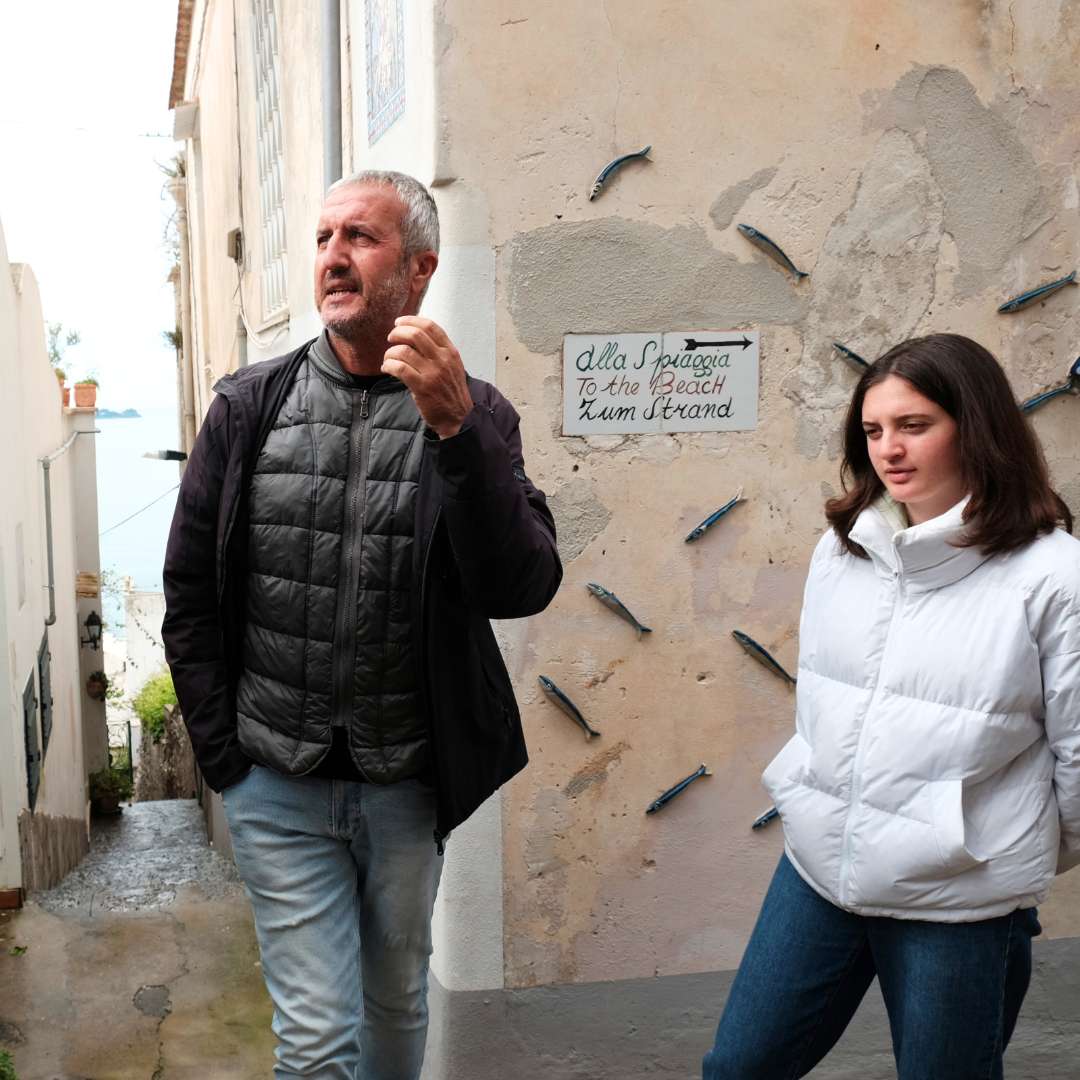
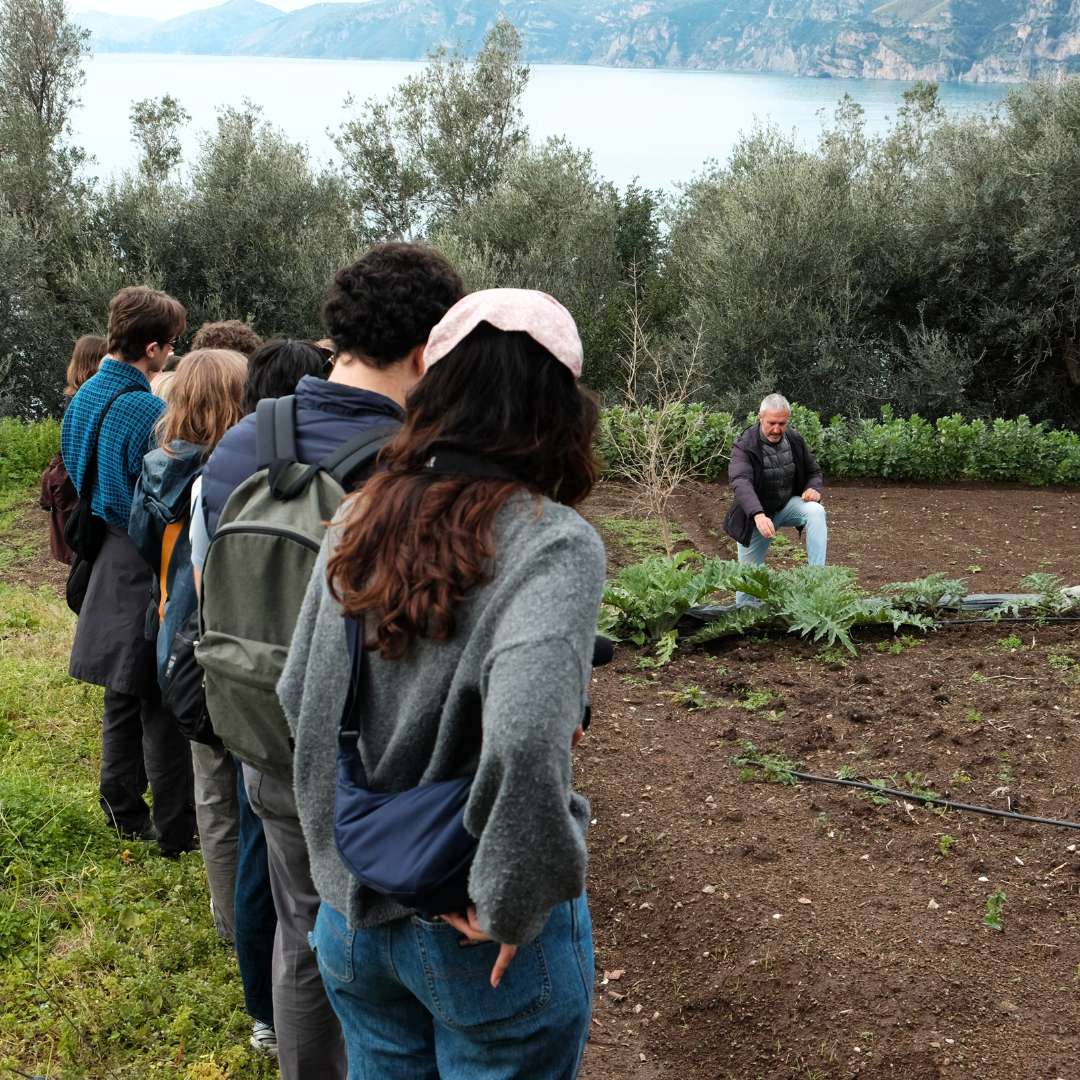
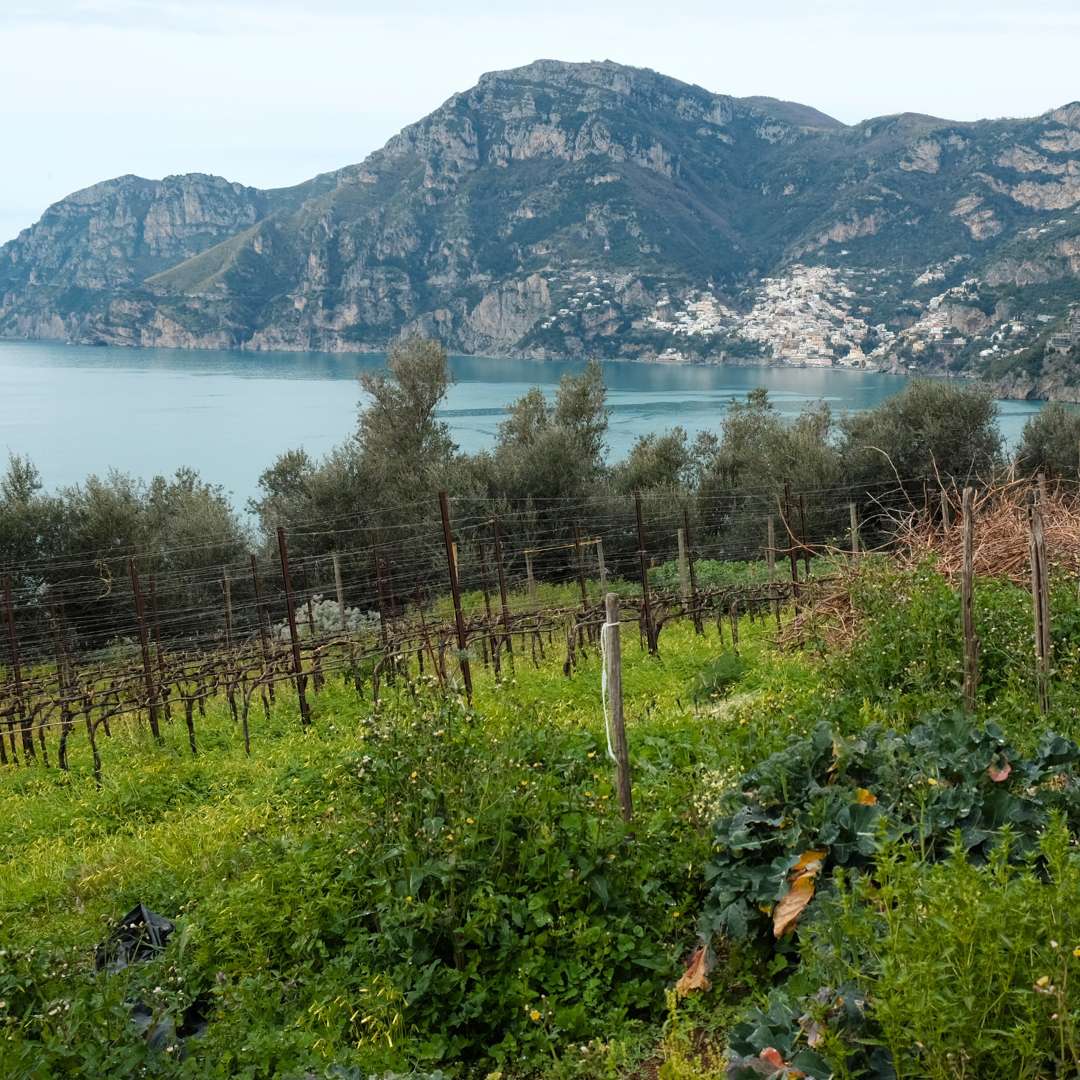
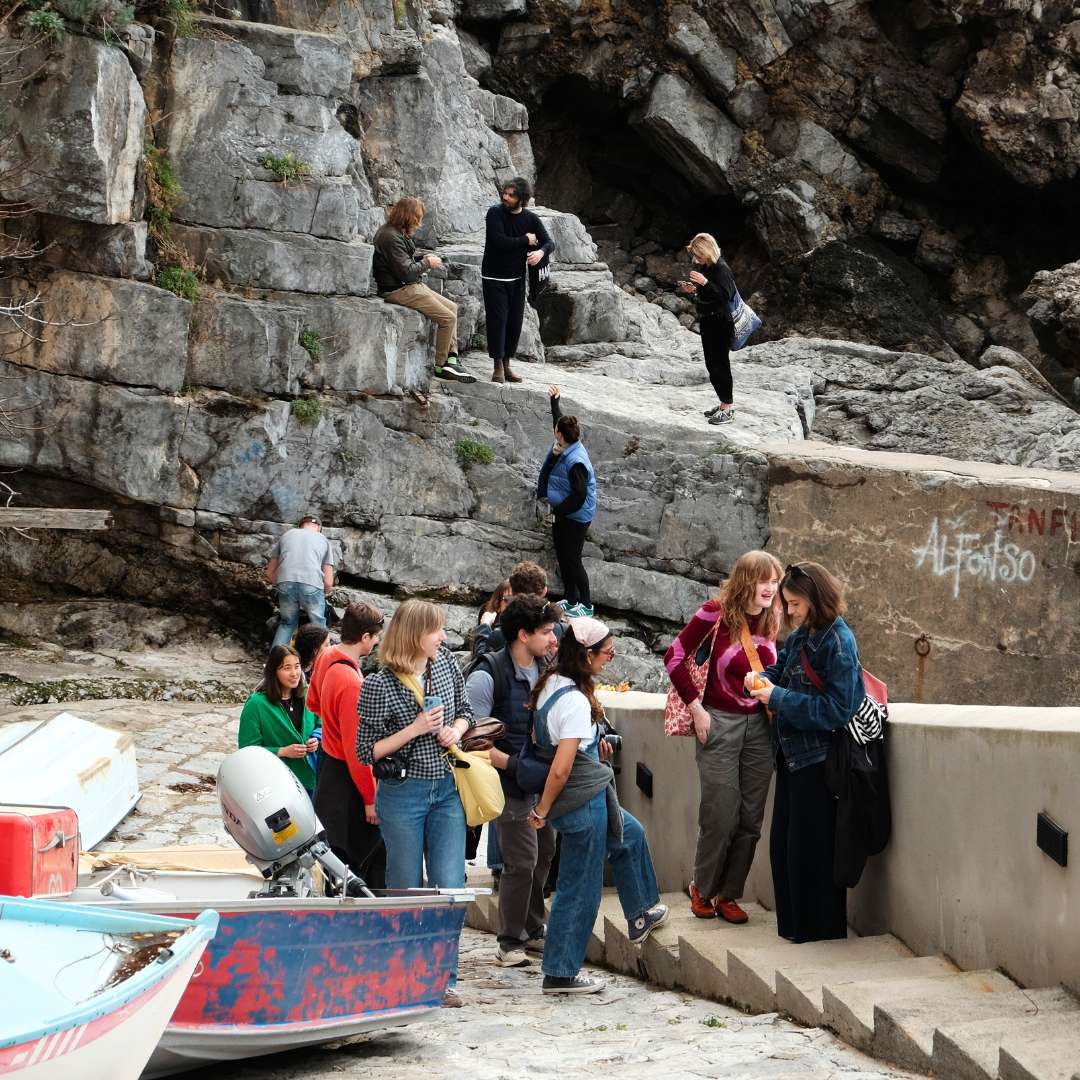
The second walkscape towards Marina La Praia with Teresita and Pasqualone
In the afternoon, we introduced the architect to the second walkscape towards Marina di Praia, in the past, the hub of city activity, where boats and fishing nets were built and cured fish was prepared. It was the landing point of the ships which, via cableway, loaded wood from Agerola to sell it on the Mediterranean coasts.
We were welcomed by Teresita Rispoli, a teacher from Praiano who grew up in Marina di Praia and an authentic witness of its changes. She told us the history of the paths that lead to the beach, accompanying us along the ancient path that leads to the mountain, a peculiar trek immersed in the vegetation of the Mediterranean scrub.
Before leaving Marina di Praia, we went to say goodbye to Pasqualone, one of the oldest fishermen in Praiano, who every day goes up and down from the town to the sea to make fishing nets for his nephew, who continues the tradition.
«As architects, these meetings were precious moments of reflection because they teach us to understand the dynamics of a place different from ours, but above all to learn to read the territory, through an anthropological gaze.»
From this walkscape and the meeting with Pasqualone, ADS7 created the short film "I'm at Praia, the Weather is not good."
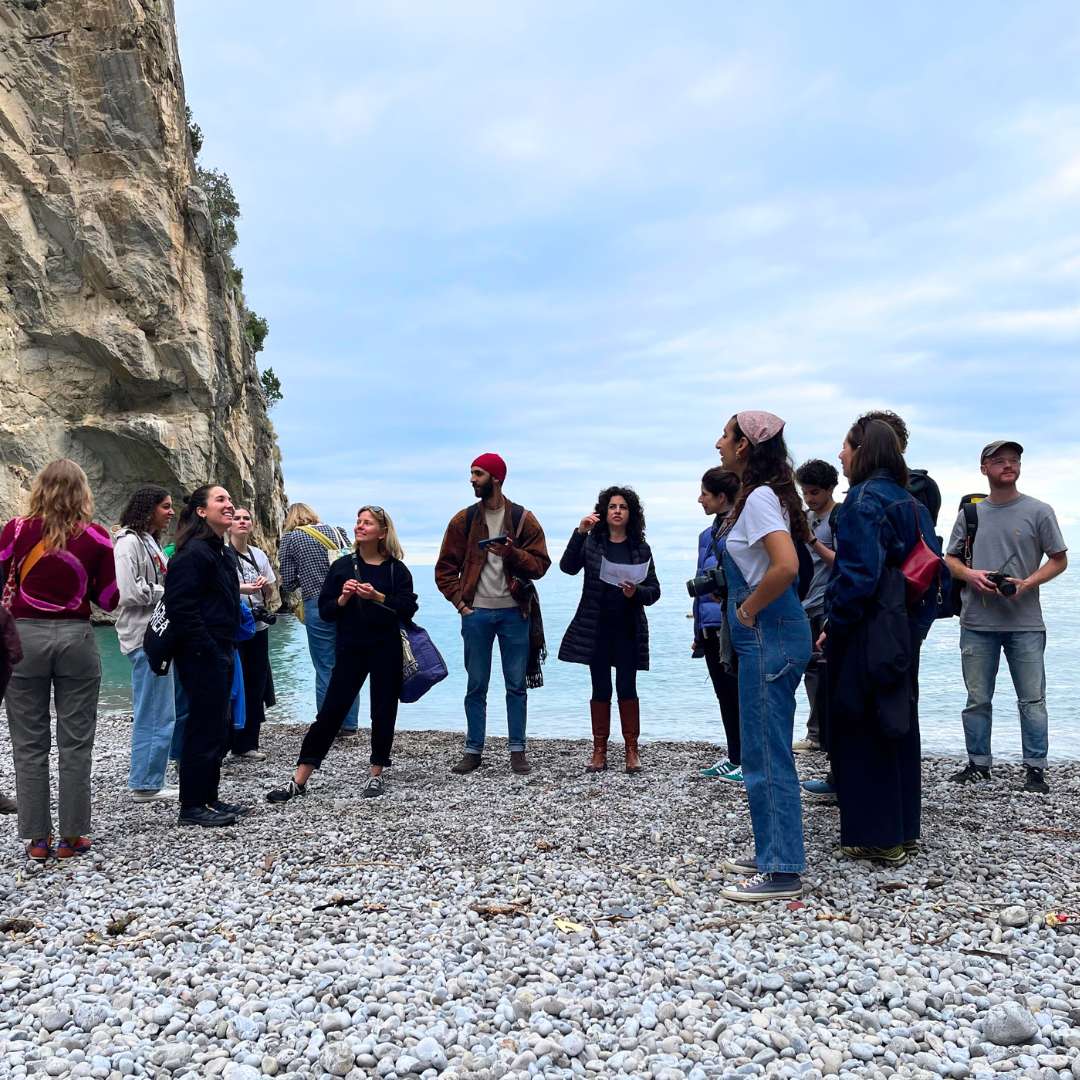
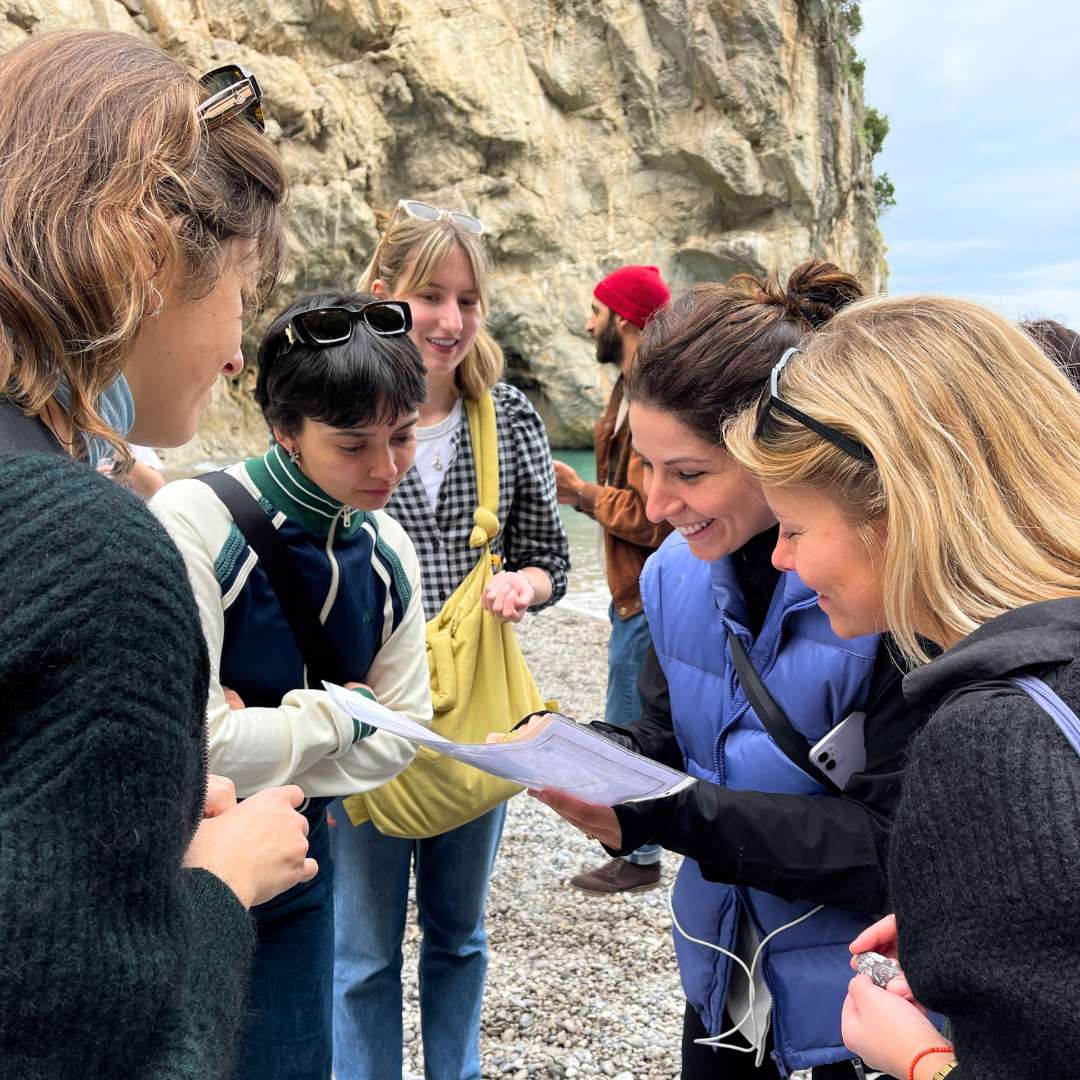
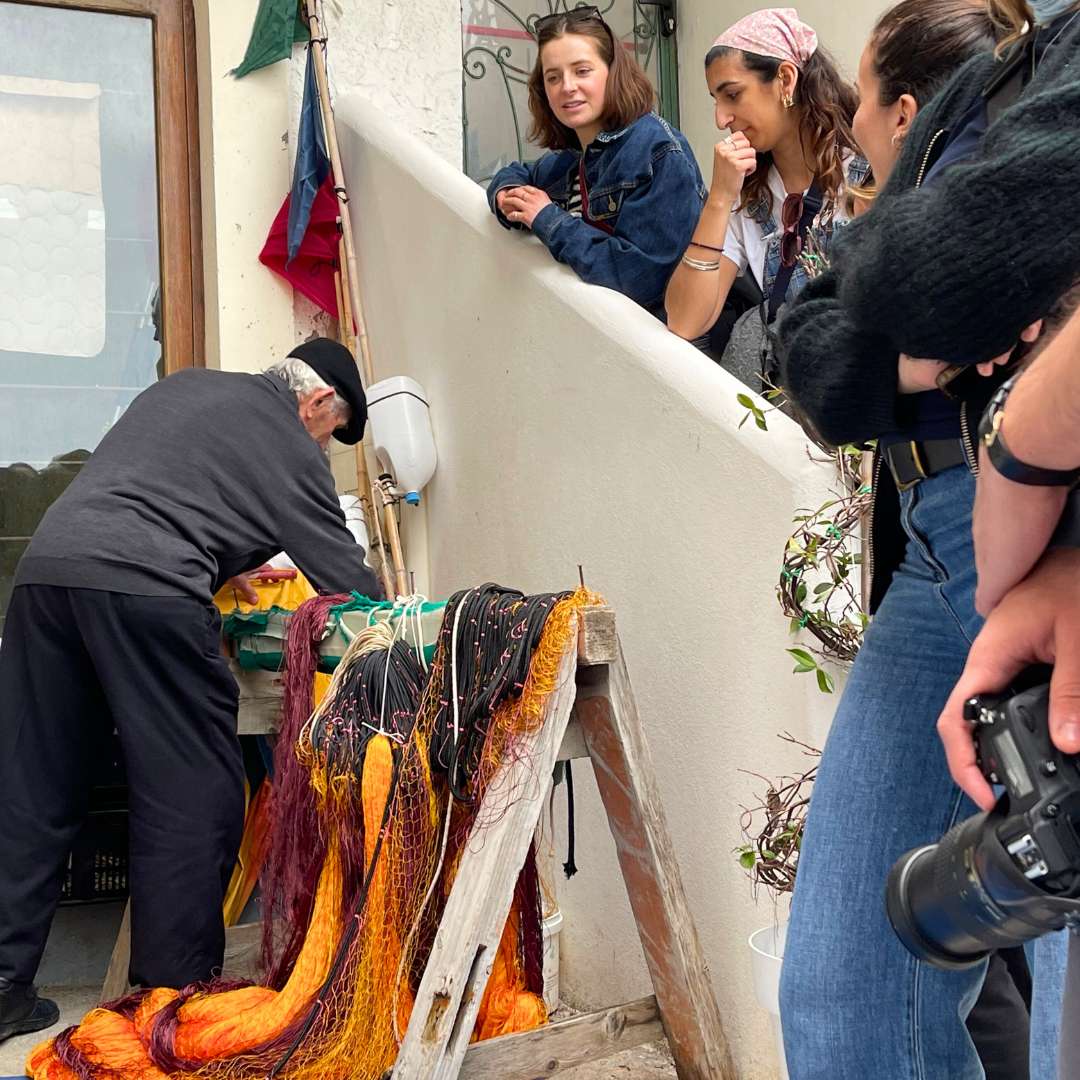
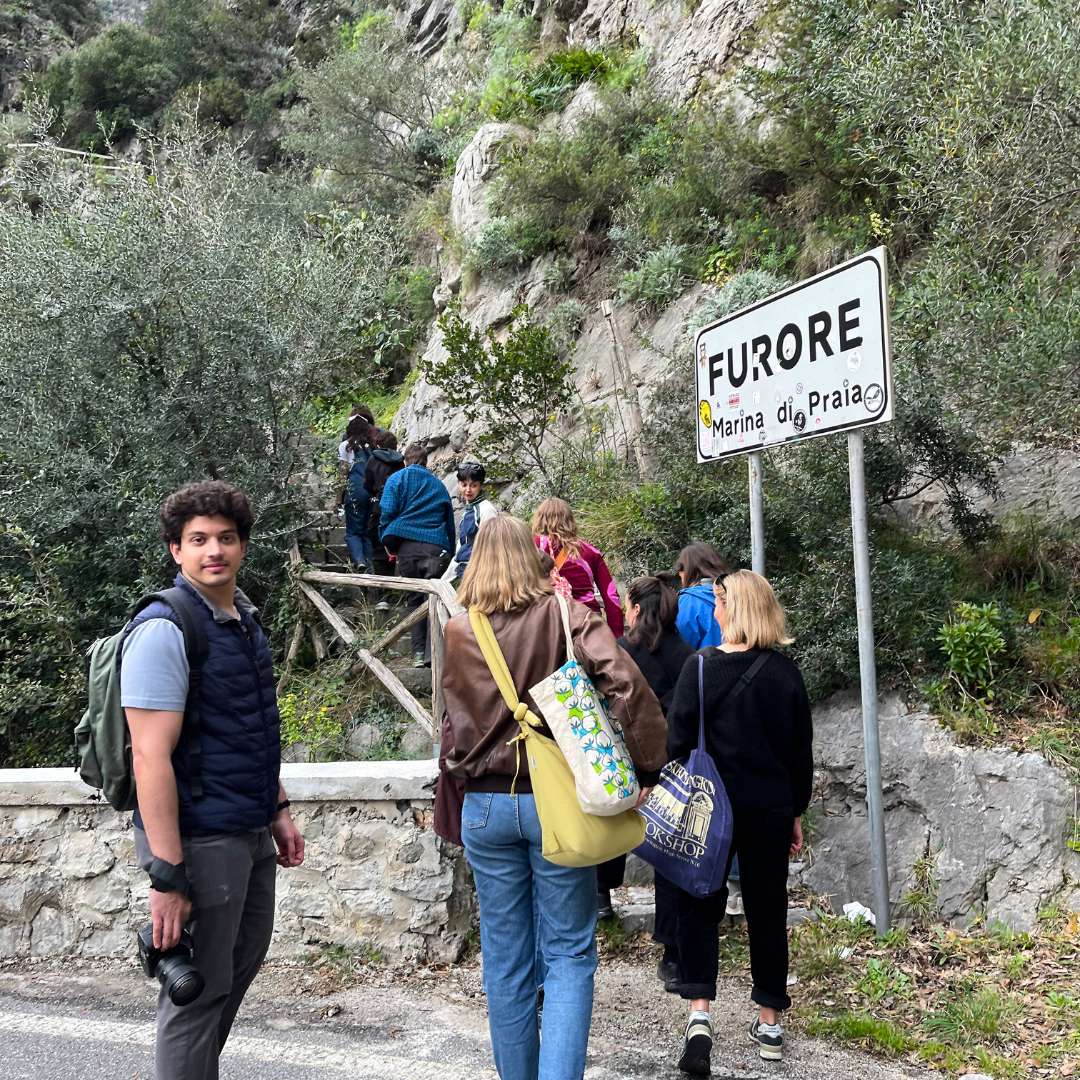
The third walkscape towards the Convent of San Domenico with Giuseppina and Salvatore and the Path of the Gods with Antonio the Shepherd
On the second day we accompanied the ADS7 students along the third walkscape, the route that leads to the Convent of San Domenico, reachable via 1000 steps and which is located at 364 m above sea level, halfway between the town and one of the hiking routes most beautiful on the Amalfi Coast, known as the Path of the Gods.
As a historical and contemporary memory of this place, we met Giuseppina, who introduced us to the neighborhood and told her story. Before the students returned to London, she gave them a jar of jam, the freshest they had ever tasted. This meeting was intended as «a regenerative practice and a tool for entering a new reality,» and it inspired the title of the third short film, "Marmalade."
In the afternoon, we continued our journey, reaching the Sentiero degli Dei, which connects Bomerano, a hamlet of Agerola, with Nocelle, a village overlooking Positano. Legend has it that the gods created and shaped the mountains that hug the path to save Ulysses from the sirens' song.
The route is also known for Antonio, "the shepherd of the gods," who welcomed us with 0 km products and traditional instruments of the popular culture of Southern Italy. Every day, riding his donkey Limoncello, he reaches his estate to take care of his goats, who live on good food, sea, and sunsets.
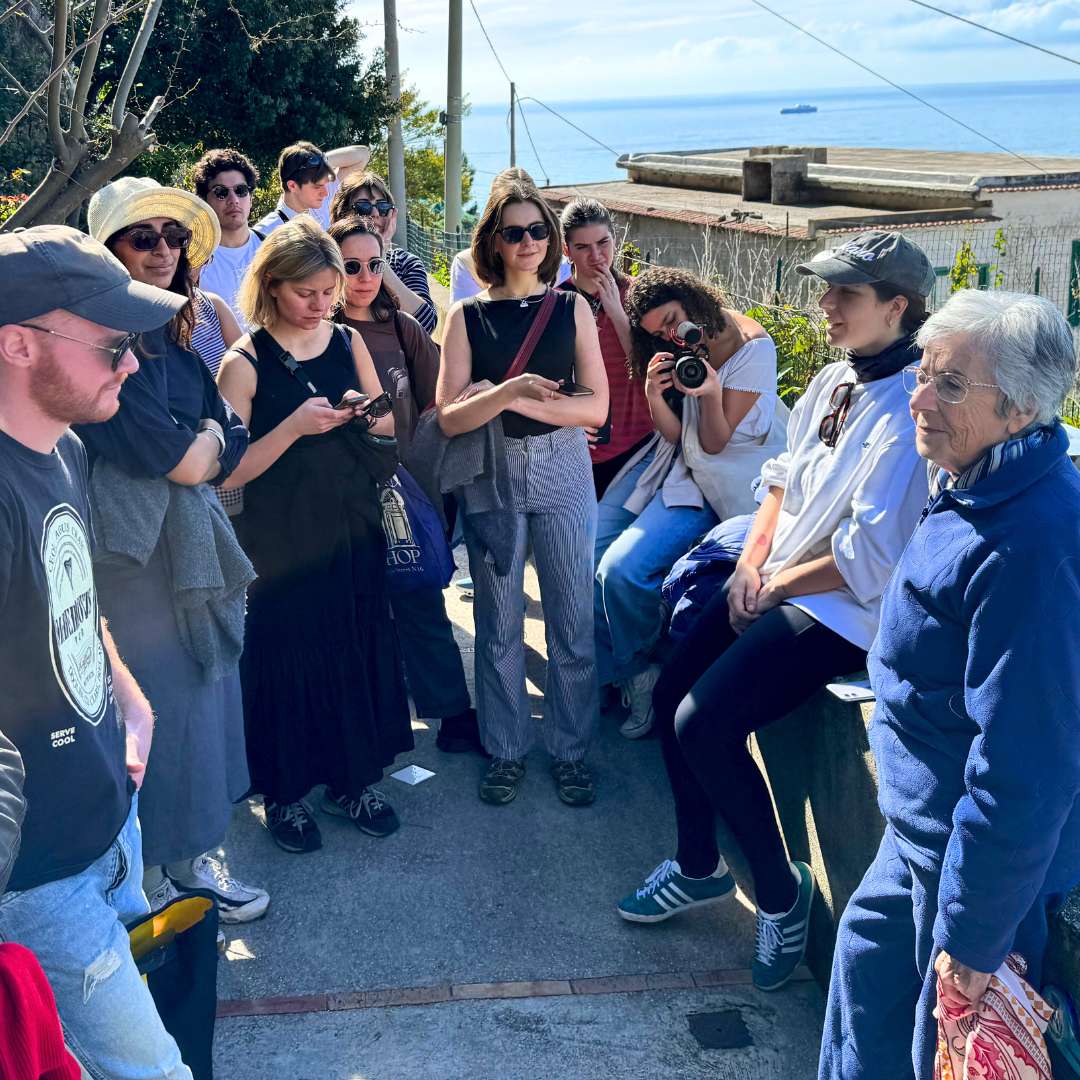
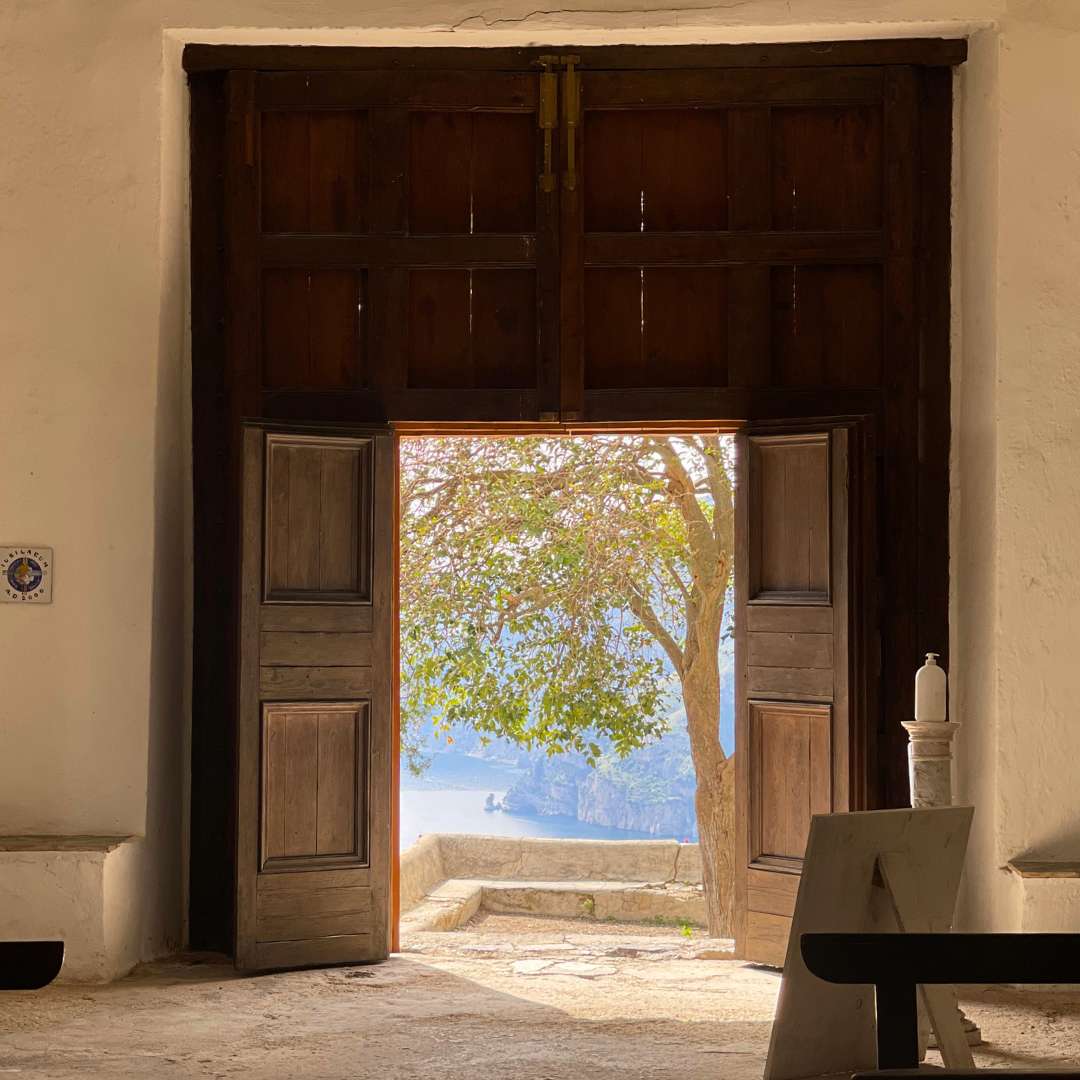
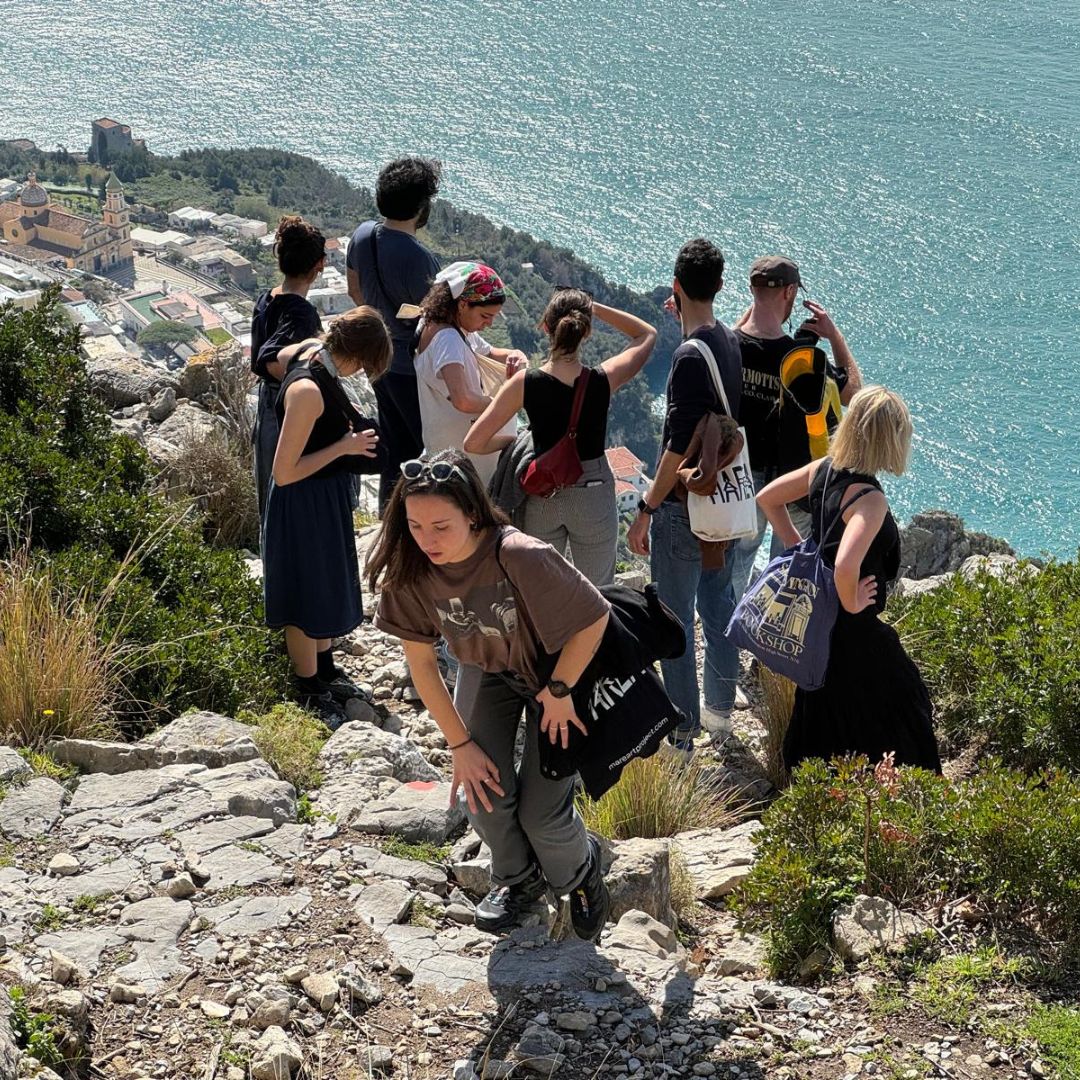
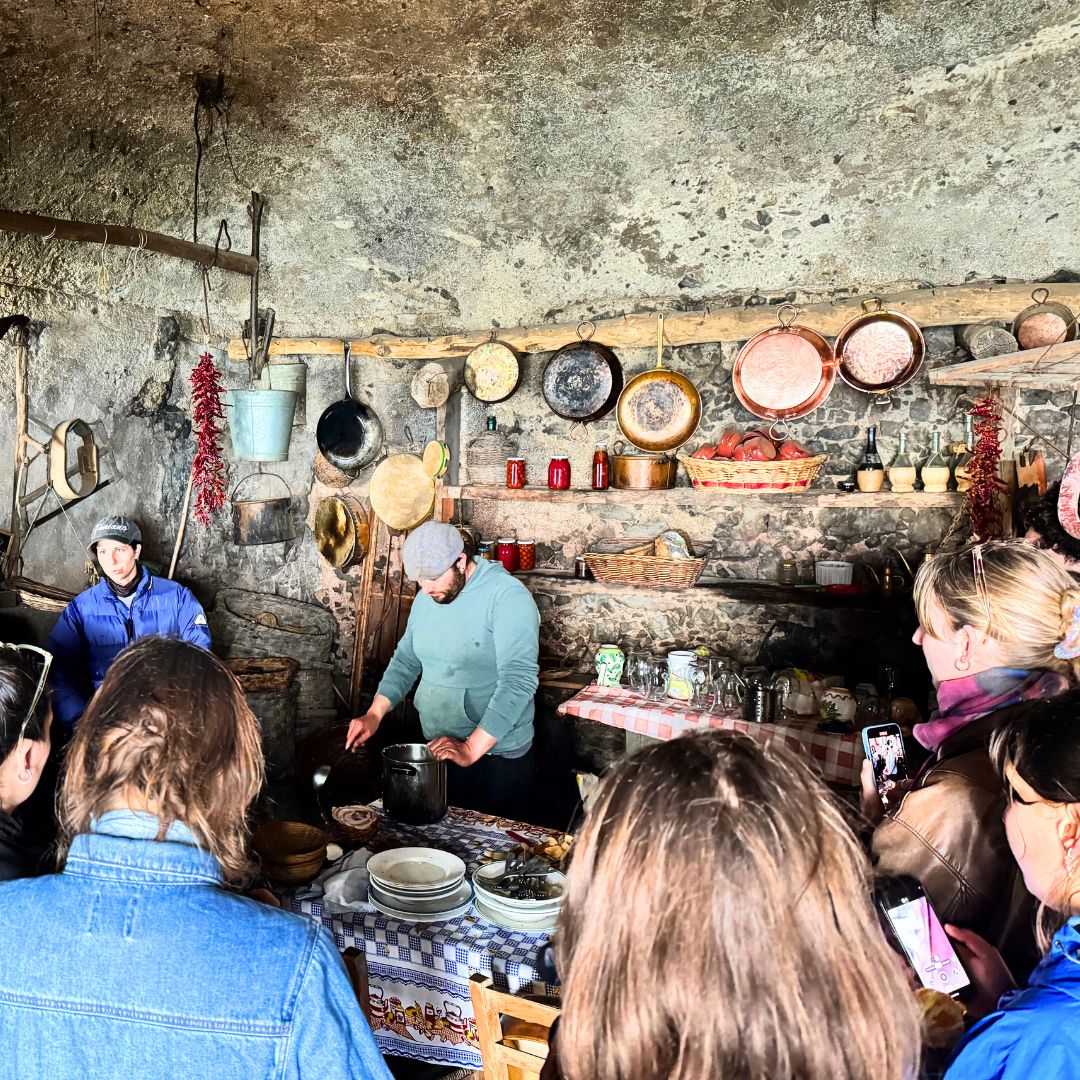
Carol and Sol LeWitt's house in Praiano with Mitchell Johnson and Donia
During the residency on the Amalfi coast, we accompanied the ADS7 to Casa L'Orto, the house built in 1700 by the ancestors of Carol LeWitt, art historian, patron, and wife of the conceptual artist Sol LeWitt.
Located in Praiano, near the ancient Spanish watchtower Torre a Mare, the house is surrounded by centuries-old terraces open to the sun and cleverly converted into organic gardens. Among the properties of the LeWitt family, the house in Praiano is the only one that presents the artist's wall drawings. wall drawings dell’artista.
We were welcomed by Donia and Mitchell. The latter, a Californian painter very close to Italian culture, shared his work with us, giving us the vastness of experiences and colors of Praiano, through a study of the light and the ever-changing shapes of the coast.
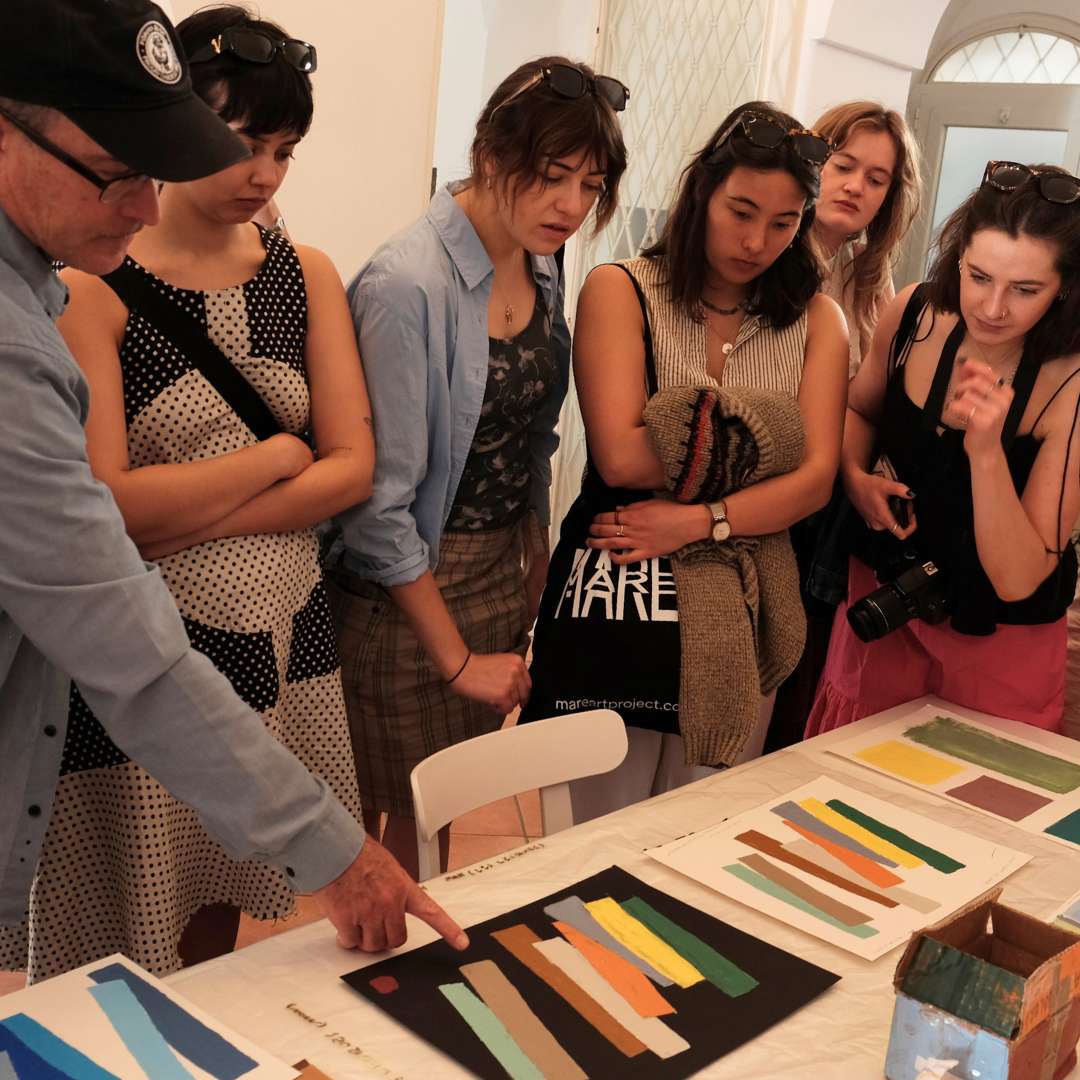
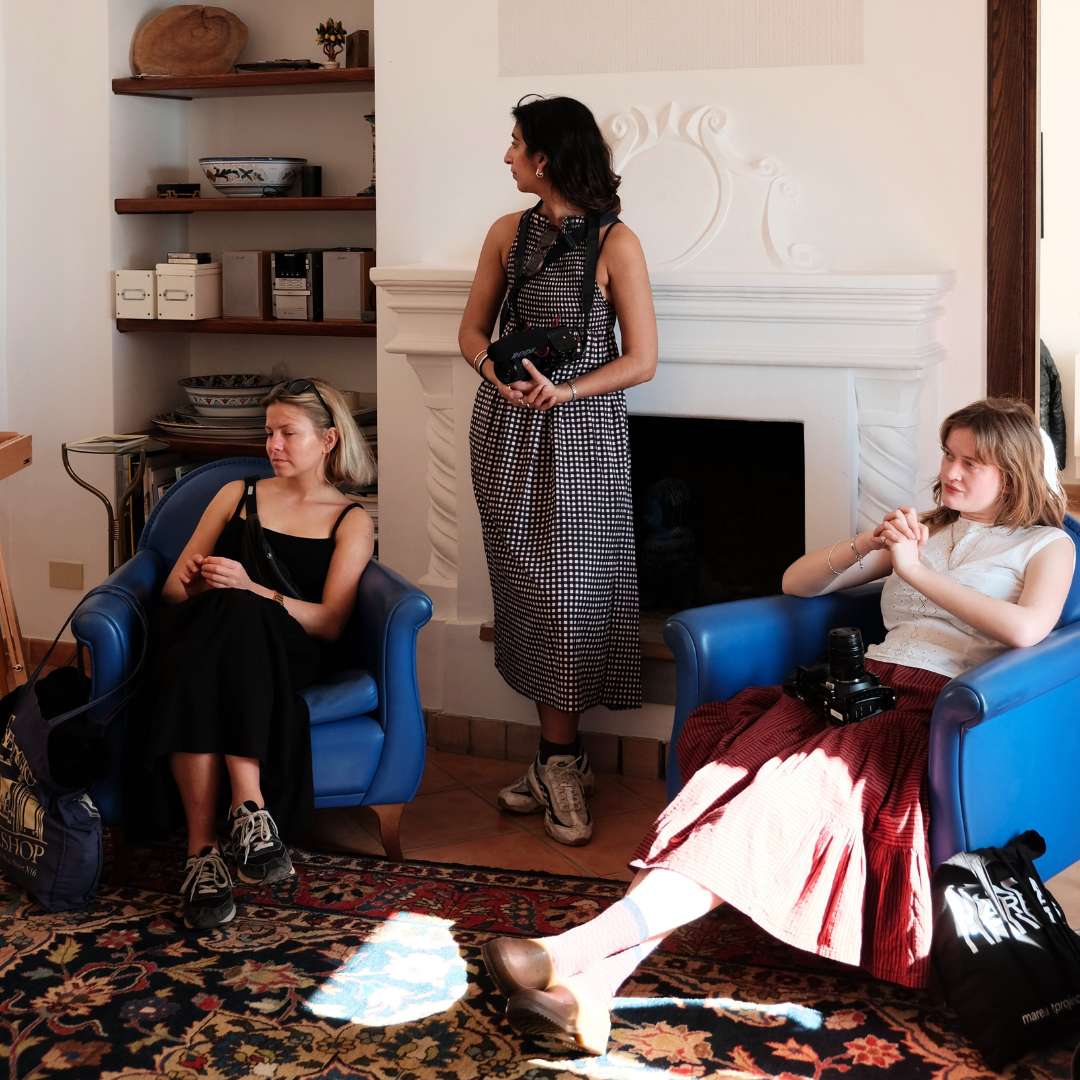
Restitution and presentation of the short f ilms
During the residency in Praiano, the students and Lemonot acted as sensitive observers, delicately listening to the memories, desires and fears of these places and the people they met. Through what ADS7 calls embodied research - an operational research in the field, the students simultaneously explored and mapped Praiano, translating sensations, stories and new narratives into a visual sequence.
«If architects use drawing as a conceptual tool, maps and cartographies require a certain level of abstraction, while the moving image has an intrinsic transformative action.»
The ADS7 residency ended with a return to the community of the short films created along the routes. It was an opportunity to bring together students and the local population to create moments of meeting and exchange, highlighting how in these places, where the sense of belonging becomes tangible, the emptiness, only apparent, gives rise to profound convivial dynamics and sometimes forgotten.
